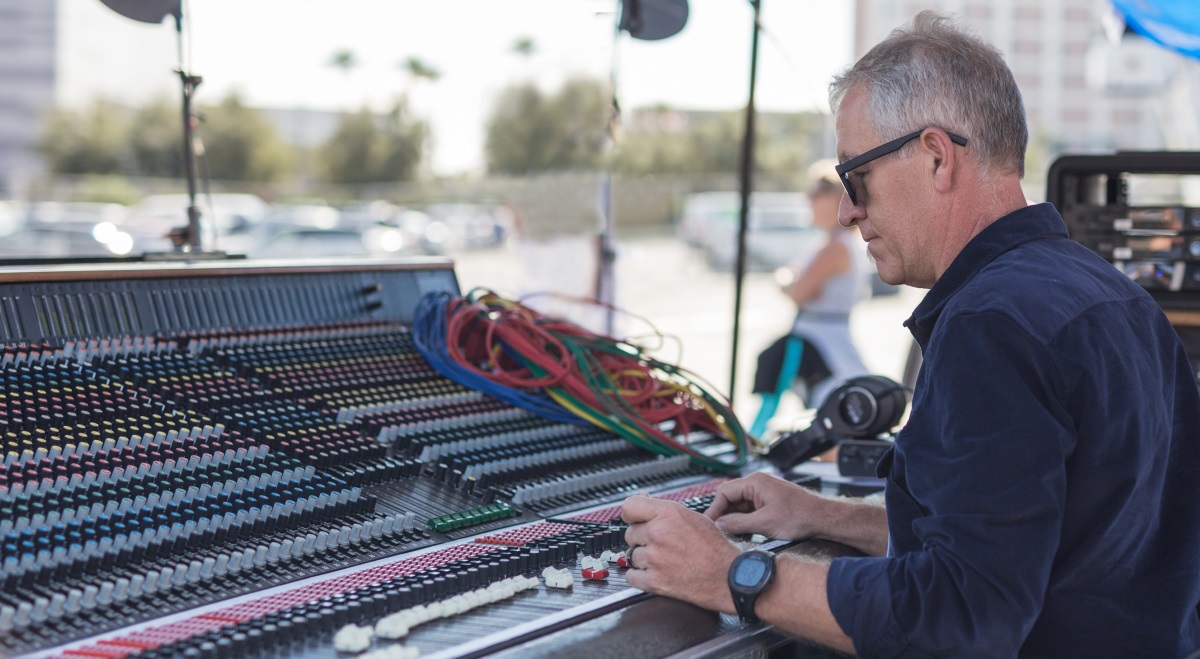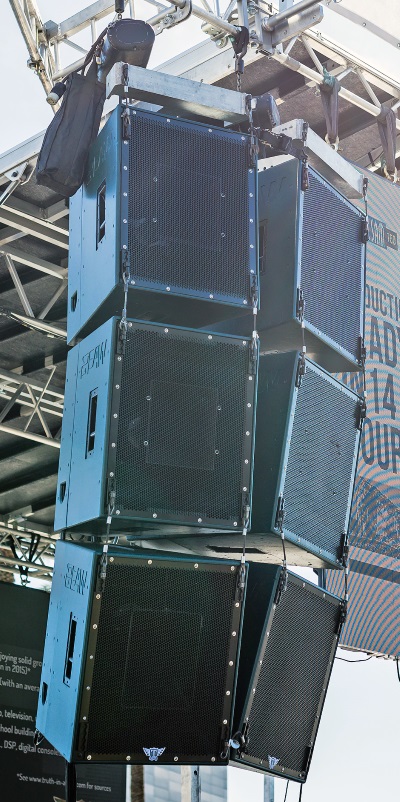
Plenty To Do
It was already later in the evening when we arrived, and everyone immediately got busy performing various tasks to get the system ready. First we had a pow-wow with the good folks from StageLine, who provided our SL100 mobile stage, and finalized the rigging plan. After that it was all about final execution as well as getting some incredible tracks that would serve as the basis of our demonstration up and running.
Here’s a list of things that needed to be addressed prior to listening to those tracks:
— The aforementioned two KF750 enclosures sitting in the trailer still required final assembly. There was sawdust and sparks flying from the trailer on setup day. The remaining components we required were on the East coast; there was no choice but to overnight them to Vegas and install them on-site in the boxes.

I was adamant about not letting anyone see the system until everything was ready to hang, wanting their distinctive green paint (a tribute to “The Green Monster” at Fenway Park in Boston, close to EAW headquarters) to be a surprise — no one outside of a select few had seen the painted enclosures.
— Once ready, Martin and I set about getting the boxes rigged while Chris loaded the system presets on the RAM Audio amplifiers driving the rig, also wiring up the patch bays. (Did I mention this was all down to the wire?) Vic and Matt were on site as well and were experiencing something unique.
For the younger folks in this business, I realized that many of the things we were doing were new to them. You see, they’ve honed their skills in an industry full of predictable results with modern computer modeling and the precision of modern line arrays. This was, well, not that.
— While all of this was going on, Robert was busy at front of house patching up a Gamble EX56 analog console and recreating his very first “virtual sound check” setup. Of note, Robert was the first person to figure out how to do these virtual checks, and although we’d passed on using the original ADAT machines he relied on at that time, most of his rig was the same as in the late 1980s through early 90s.
This is where things got really amusing with the “young guns.” We fired up the rig and dispatched Vic to do the tuning. The subsequent head-scratching was quite entertaining as we ratcheted and rotated enclosures to achieve some semblance of isolation from each. Vic had fallen from his world of “perfection,” sweating these “cowboy” tactics while the “gray beards” (Robert, Martin and I) grinned and chuckled over what we were needing to do to make this rig happen.
“The left is measuring different than the right,” Vic told us rather emphatically. “Welcome to the 1980s, brother,” came our reply. As we tweaked the positioning of the boxes, the results continued to improve until we had a left/right system that was nearly identical. Well, good enough for a point source array.
